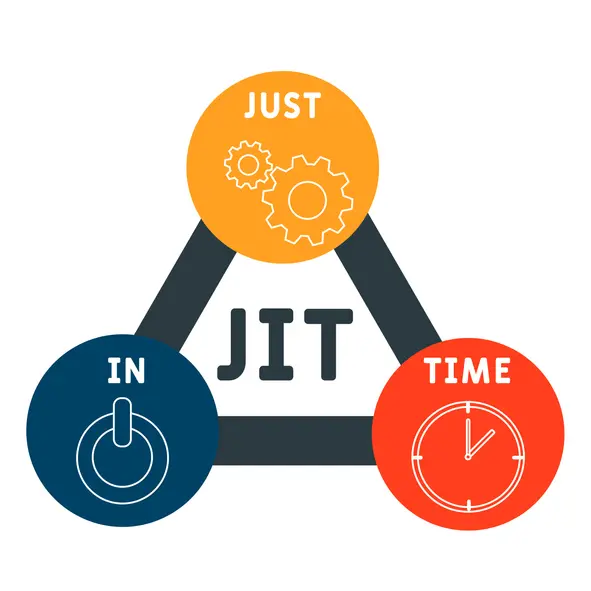For businesses and any online e-commerce company to achieve best-in-class inventory management, they must maintain the right amount of inventory to meet anticipated inventory demand effectively. Companies and online retailers unable to maintain this delicate balance end up carrying too much inventory and spending further money on expedited or emergency shipments and unplanned inventory replenishment.
Because of these issues, companies and online retailers are constantly trying to improve inventory management through demand planning and inventory forecasting models that try to predict the “right” balance of inventory between too much stock and stock-outs. Companies can achieve the optimal level of inventory by using inventory forecasting to determine the demand projection of inventory in future months.
What is Inventory Forecasting?
Inventory forecasting is the practice of predicting future consumption for a company’s products in every location where stock is held. It uses historical data, market trends, and other relevant factors to estimate the quantity of goods that will be required within a certain future time frame. The primary goal of inventory forecasting is to ensure that a business maintains optimal stock levels, by having enough inventory to satisfy customer demand without overstocking, which could lead to storage issues or excessive costs.
Accurate inventory forecasting is essential for effective inventory management, as it minimizes carrying costs and ensures stock is available to meet demand. This also assists in making informed decisions about production, purchasing, and stocking levels. The benefits of inventory forecasting also include improved customer service and reliability as stock will be available, and operational efficiency as inventory management is streamlined by automating the reordering process, thus minimizing manual errors.
Inventory Forecasting Methods
Inventory forecasting can be accomplished in various methods that leverage different techniques and data analytics to forecast future consumption of goods, raw materials, and semi-finished goods. Some of the key inventory forecasting methods are:
Statistical Forecasting Methods
Statistical Forecasting models utilize mathematical algorithms and historical data to generate demand forecasts. Time Series Analysis examines historical data to identify patterns, trends, and seasonality in sales. Regression Analysis examines the relationship between independent variables such as time or price, and dependent variables like sales. This technique assists in understanding how changes in one variable may affect demand.
The accuracy of statistical forecasting methods is dependent on various factors such as the volatility of demand, as more volatile products are more difficult to forecast. Another consideration is that products with greater availability of data will be able to be more accurately predicted, forecasts that have a long-term time horizon will tend to be less accurate, as there is more uncertainty in the forecast, and finally, external causal factors like promotions, marketing spend or simply the weather, as well as global crises or macroeconomic factors, can greatly influence sales. To analyze and account for these factors, accurate demand forecasting is necessary. Read our article on demand forecasting to learn more.
Machine Learning Algorithms
Machine Learning algorithms have become popular in inventory forecasting due to their ability to handle complex patterns and relationships and to process large volumes of data. Machine Learning Algorithms such as neural networks and support vector machines learn patterns from historical data to make predictions about future demand. These techniques offer the advantage of adaptability, learning from new data, and processing non-linear relationships. Machine Learning has the ability to continuously improve forecasts as new information becomes available. However, they require substantial historical data and strong computational power to perform these complex forecasts accurately.
Historical Data Analysis
Historical Data Analysis examines past data to identify patterns, trends, and insights that can be used to make predictions about the future. This technique studies past sales, demand, and other information related to inventory. Historical data analysis can identify recurring patterns by using historical data to identify what factors impact sales volumes. The identification of seasonal variations due to holidays or specific times of the year is crucial to inventory management. Furthermore, historical data can be used to test the accuracy of forecasting by validating and improving the models by comparing the actual inventory demand to the forecast.
ABC Analysis
ABC Analysis classifies inventory items into categories based on their value. ABC Analysis prioritizes items, with Category A being high value and requiring strict controls. These items should have a greater focus on inventory forecasting.
Most Effective Forecasting Technique
As mentioned, inventory forecasting is a crucial aspect of inventory management. However, there are some aspects that enhance the accuracy and effectiveness of inventory forecasting. The assurance of quality of data eliminates errors or inconsistencies in forecasts by using accurate, complete, and consistent data. A business can decide to employ multiple forecasting methods. By combining statistical techniques, machine learning models, and historical data analysis, more robust predictions can be produced.
To improve your inventory forecasting we suggest using a state of the art demand planning software, like Intuendi. These tools separate demand from inventory, moving away from physical locations, targeting specific sales channels, allowing an in-depth analysis of actual demand for your products, unconstrained by availability or distribution models. Read our article on demand planning to learn more.
How to Calculate an Inventory Forecast
- Define and Gather Once you have set your intended goal of the forecast, collect relevant sales data to research from.
- Forecasting Method Select a forecasting method most suited to your data and objectives from a specific time period. Any piece of data that will heavily influence the sway of the data, such as outliers and errors, should be removed in order to remain consistent.
- Split Data for Validation Split the historical data into two parts: a training set and a validation set. The training set is used to build the forecast model, while the validation set is used to test its accuracy. Apply your chosen method to the training model. The validation set will be used to test your forecasts’ accuracy, which can be compared with the actual values.
- Make Forecasts Once you have a validated and accurate model, use it to make forecasts for the desired time frame. These forecasts will guide your inventory management decisions. Continue refining your process, smoothing out discrepancies, and refining your method.
- Calculation Apply the forecasted consumption to your current stock levels, adding in any stock due to arrive in the forecasting window, and view how your stock will evolve over time.
- Trigger levels Set minimum stock levels for each product and location to trigger replenishment.
- Set Coverage Determine how long you want your replenishment to last before you need to replenish again
- Safety Stock Consider a buffer of extra units to protect you against any variation in the demand.
It is important to keep in mind that other considerations may impact the accuracy of the forecasts. As mentioned above, the quality of data is vital as inaccurate or incomplete data will lead to flawed predictions. A business should be aware of any variability in lead time and supply chain for different products, as unpredictable delays can affect inventory levels, and should be factored into the forecast.
One should also consider the current economic climate and market trends to determine the future demand for products. Furthermore, certain products’ lifecycles and seasonality can drastically affect demand. Being aware of these factors can ensure that inventory forecasting is completed holistically and accurately to optimize inventory stock levels.
Practical Applications
Several companies have successfully implemented inventory forecasting strategies, using various techniques and methods to optimize their inventory management.
Amazon
Amazon utilizes advanced machine learning algorithms to predict customer demand. Their forecasting systems analyze an abundance of data, including past sales, browsing behavior, and seasonal trends to optimize their inventory levels in each fulfillment center.
Walmart
Walmart has implemented a sophisticated inventory management system that evaluates historical sales data and real-time information. They use a demand forecasting system that predicts consumer purchasing behavior, allowing Walmart to minimize excess inventory while reducing the risk of stockout.
Zara
Zara, as a major fashion retailer, has an inventory management system that allows them to quickly respond to changing fashion trends. They use a fast production cycle which is based on real-time sales data and feedback from customers. This allows them to quickly restock products that are in high demand.
Coca-Cola
Coca-Cola uses predictive analytics to forecast demand for its beverages. They adjust production and distribution levels to satisfy future demand by analyzing historical sales, weather patterns, and other external factors.
The Importance of Inventory Forecasting
Inventory forecasting helps businesses maintain the right amount of stock. This enables cost efficiency as holding costs and wastage are minimized while reducing capital invested in inventory. Forecasting ensures products are available as customers want them, helping businesses to retain customers, enhance customer satisfaction, and prevent lost sales from unavailable products.
Download our free eBook on to keep a lean inventory in a growing business:






